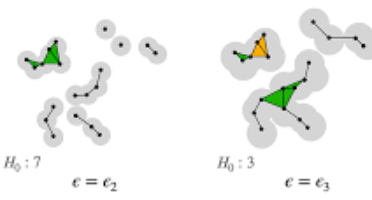
JacobBillings
Project OwnerPublished research on persistent homology applications to brain network dynamics, with expertise in geometric data analysis and network visualization.
DEEP Connects Bold Ideas to Real World Change and build a better future together.
Coming Soon
This proposal develops a “sleep consolidation” paradigm for knowledge graph refinement that leverages topological data analysis to systematically optimize PRIMUS cognitive architecture performance. Drawing from neuroscientific principles of memory consolidation during sleep, our approach transforms discrete symbolic knowledge into continuous geometric representations, applies persistent homology analysis to identify natural clustering patterns, then translates discoveries back into optimized MeTTa atom structures within the Distributed Atomspace (DAS).
This RFP invites proposals to explore and demonstrate the use of neural-symbolic deep neural networks (DNNs), such as PyNeuraLogic and Kolmogorov Arnold Networks (KANs), for experiential learning and/or higher-order reasoning. The goal is to investigate how these architectures can embed logic rules derived from experiential systems like AIRIS or user-supplied higher-order logic, and apply them to improve reasoning in graph neural networks (GNNs), LLMs, or other DNNs. Bids are expected to range from $40,000 - $100,000.
Establish core topological analysis infrastructure integrated with PyNeuraLogic for hypergraph embedding learning. Develop MeTTa language extensions supporting geometric operations and create computational topology toolkit optimized for knowledge graph analysis. Key activities include implementing Vietoris-Rips complex computation, persistent homology extraction with barcode analysis, PyNeuraLogic integration for dense representation learning, and performance optimization for large-scale topological computation leveraging MORK's billion-atom processing capabilities. Create comprehensive testing framework validating topological feature significance through statistical analysis and bootstrap sampling methods.
- PyNeuraLogic integration library for knowledge graph hypergraph embedding learning - Computational topology toolkit including Vietoris-Rips complex generation and persistent homology computation - Performance benchmarking suite demonstrating scalability to million-node knowledge graphs - Statistical validation framework for topological feature significance testing - Comprehensive API documentation and developer guides - Automated test suite with 85%+ coverage - Integration demonstration with existing MORK infrastructure
$20,000 USD
Milestone succeeds when system can process knowledge graphs with 1M+ nodes, compute persistent homology with sub-minute response times, generate statistically significant topological features validated through bootstrap analysis, demonstrate seamless PyNeuraLogic integration for embedding learning, and show successful MeTTa expression evaluation for geometric operations with comprehensive test coverage.
Implement direct integration with PRIMUS cognitive components (PLN, ECAN, MOSES) using topological analysis results to enhance reasoning performance. Develop specialized interfaces respecting each subsystem's computational requirements while providing enhanced knowledge organization. Create PLN uncertainty regions based on topological clustering, implement ECAN attention allocation using geometric centrality measures, and develop MOSES evolutionary search within topologically-constrained spaces. Establish comprehensive benchmarking framework measuring reasoning performance improvements across all PRIMUS components with automated A/B testing capabilities.
- PLN integration with topological uncertainty region computation and confidence boundary optimization - ECAN attention allocation enhancement using topological centrality and geometric importance measures - MOSES evolutionary search integration with topologically-constrained optimization spaces - Automated benchmarking suite measuring reasoning performance across PLN inference accuracy, MOSES convergence rates, and ECAN attention efficiency - A/B testing framework comparing pre/post-consolidation performance on standardized reasoning tasks - Performance optimization specifically targeting PRIMUS component integration points - Comprehensive documentation of cognitive architecture enhancement mechanisms - Statistical analysis reports demonstrating measurable reasoning improvements
$20,000 USD
Milestone succeeds when PLN demonstrates 10%+ improvement in inference accuracy, ECAN shows 10%+ improvement in attention allocation efficiency, MOSES exhibits 10%+ faster convergence on program synthesis tasks, A/B testing confirms statistical significance of improvements, and integration maintains full compatibility with existing PRIMUS architecture while demonstrating sustained performance gains across multiple evaluation cycles.
Reviews & Ratings
Please create account or login to write a review and rate.
Check back later by refreshing the page.
© 2025 Deep Funding
Join the Discussion (0)
Please create account or login to post comments.